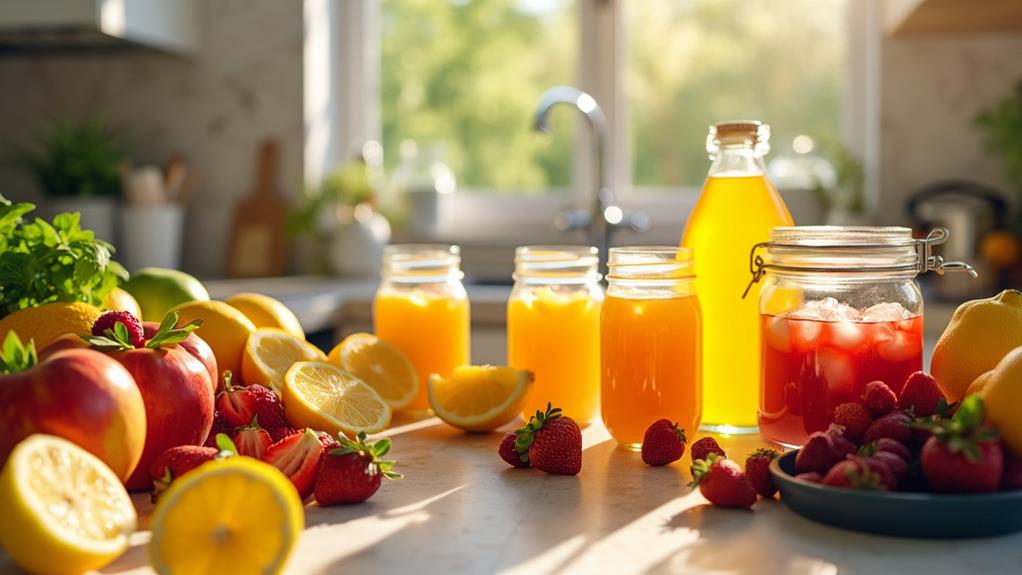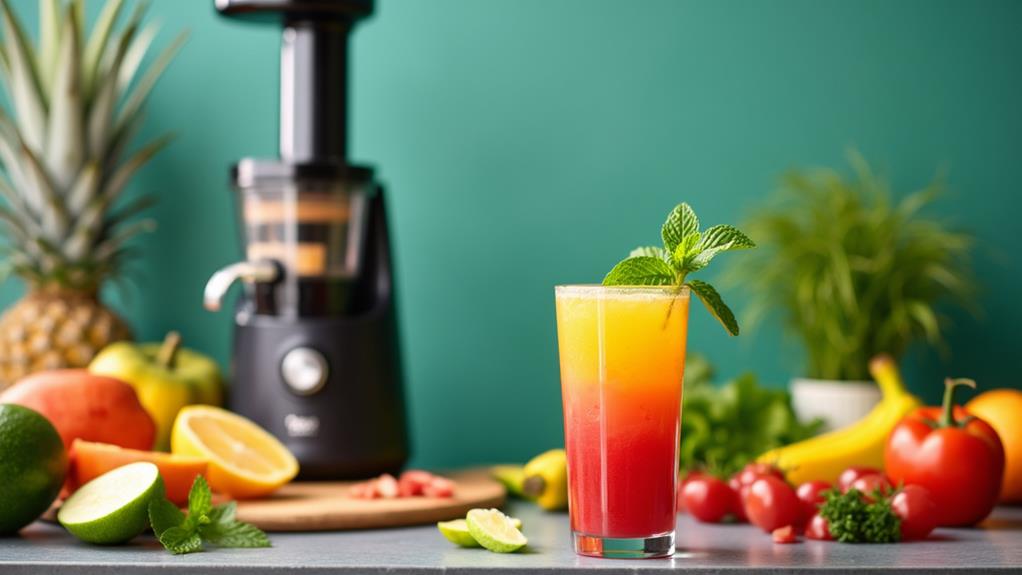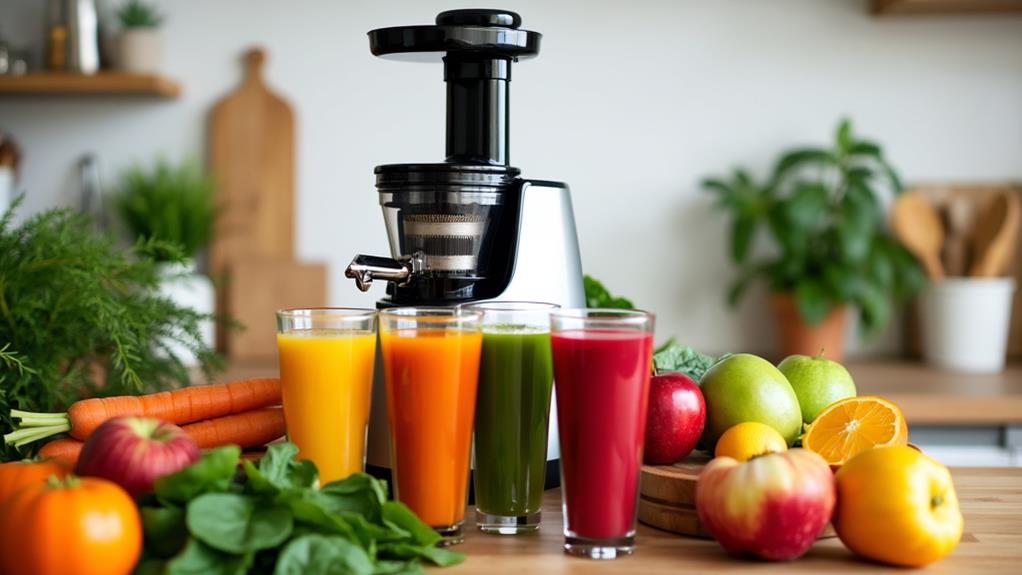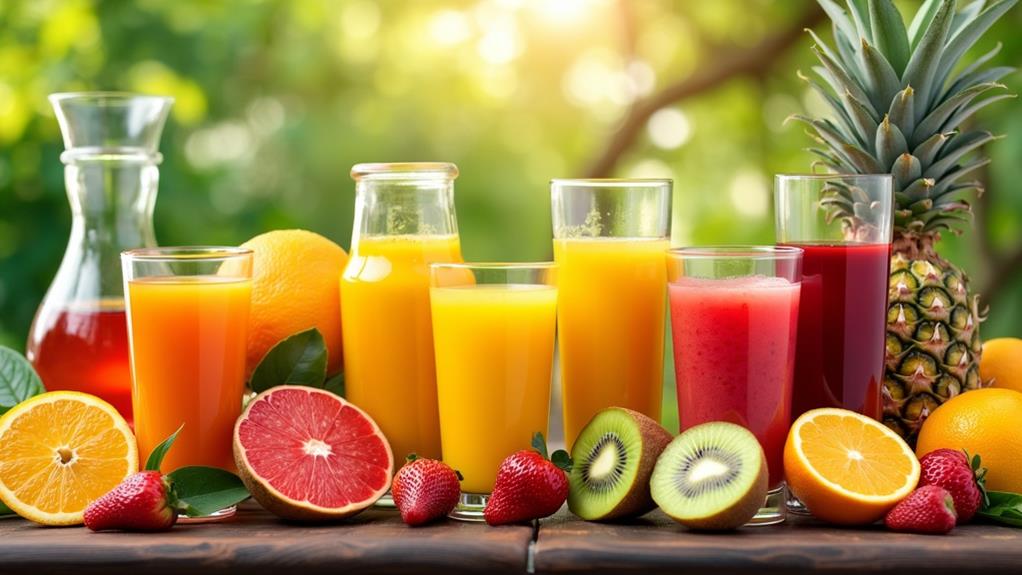Simple Guide to Reading Juice Labels
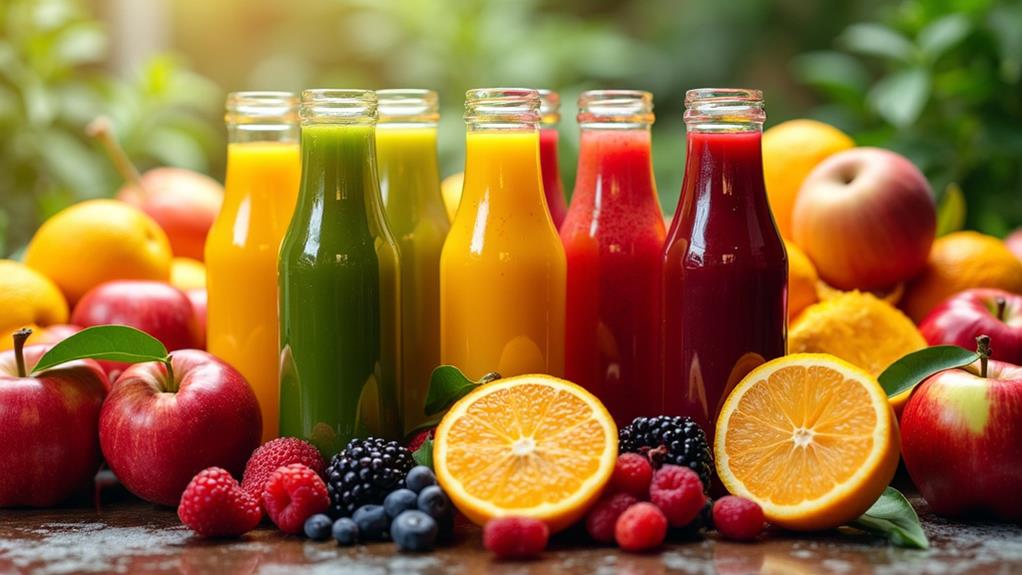
When scanning juice labels, look for "100% juice" and avoid terms like "juice cocktail" or "juice drink." Keep an eye out for hidden sugars like sucrose or fructose and aim for shorter ingredient lists with recognizable items. Be cautious of serving sizes, often smaller than what you consume, and multiply nutritional information for total servings. Avoid juices with artificial additives and watch for ingredients like BHA or artificial colorings. Health claims such as "no added sugars" or "organic" can guide your choices, but verify actual juice contents to be sure. There are key details waiting to improve your selection skills.
Recognizing Key Ingredients
When you pick up a bottle of juice, the ingredient list is your roadmap to understanding what's inside. Start by scanning the food labels for key ingredients. Ideally, you want to see "100% juice" or the name of a specific fruit as the primary ingredient. This assures you that real fruit is the primary component. Next, check the nutrition facts for the percentage of actual juice. Some products might surprise you with more water and added sugars than real juice.
Be vigilant about recognizing added sugars. Words like "sucrose," "fructose," or "corn syrup" on the ingredient list often reveal hidden sugars. These terms signal processed sweetness that's not from the fruit itself. A shorter ingredient list—think 1-5 recognizable items—is generally a good sign. It suggests a more natural product without unnecessary additives.
Watch out for terms like "juice cocktail" or "juice drink" on the labels. These often mean there's less juice and more added sugars or artificial ingredients. By focusing on these ingredients, you're better equipped to select juices that align with your desire for natural, healthier options. Keep your choices simple and informed.
Understanding Serving Sizes
After identifying the key ingredients in your juice, it's likewise vital to grasp the concept of serving sizes. Juice labels show a serving size that reflects typical consumption, but they often underestimate how much you actually drink. So, when you're reading these labels, remember you might need to double the stated serving size for an accurate nutrition assessment. This is especially significant when monitoring added sugars. Many juices contain considerable amounts of sugars that can quickly add up if you consume more than one serving.
Pay close attention to the fluid ounces listed for the serving size. This helps you understand precisely how much juice you're drinking compared to the recommended serving. Knowing this is fundamental for making informed food choices. Juice labels often indicate multiple servings per container. So, to know your total intake, multiply the nutritional values by the number of servings you consume.
Serving sizes can vary greatly between different juice brands and types. Always compare them to make sure you're selecting the best option for your nutritional goals. By understanding serving sizes, you can better manage your consumption and make healthier choices.
Identifying Hidden Sugars
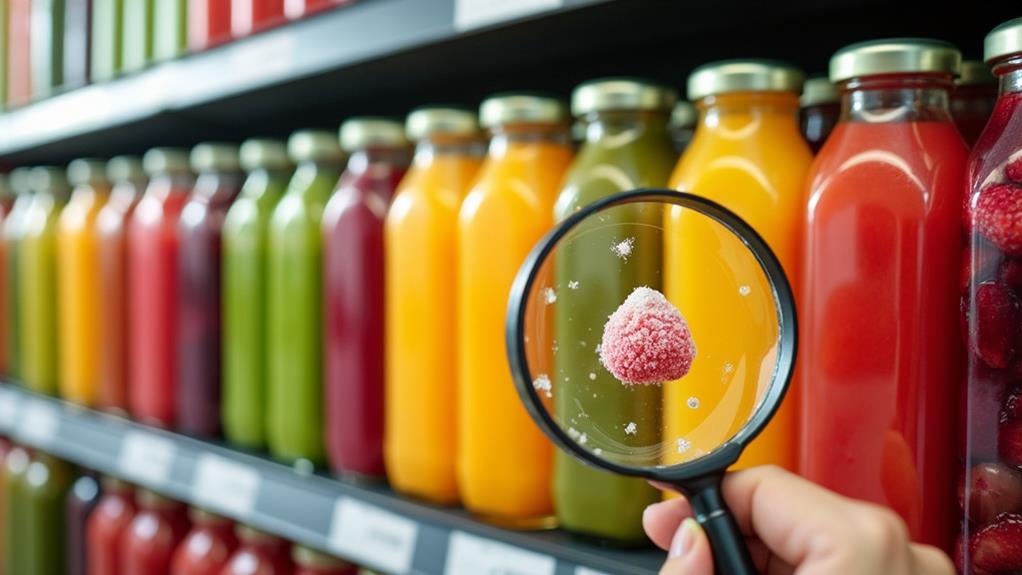
Hidden sugars are often masked under numerous names on juice labels, making it tricky to spot them at a glance. To uncover these hidden sugars, you need to scrutinize the ingredient list closely. Ingredients are listed in descending order by weight, so if you see terms like sucrose, fructose, or corn syrup near the top, the juice likely has high added sugars. Be wary of terms like "fruit juice concentrate"—it might suggest supplementary sugars not immediately obvious.
To effectively identify hidden sugars in your food or beverage, consider these tips:
- Examine the ingredient list for terms like sucrose, fructose, and corn syrup.
- Check the Total Sugars on the Nutrition labels. It includes both added and naturally occurring sugars.
- Look for "no added sugars" but verify the Total Sugars to assess complete sugar content.
- Avoid juices with sweeteners listed among the primary few ingredients.
- Be suspicious of "fruit juice concentrate" as a sign of extra sugars.
Evaluating Fats
In evaluating fats on juice labels, it's crucial to understand that not all fats are detrimental to your health. Healthy fats, like those in avocados and nuts, provide important nutrients and support heart health. When you're reading food labels, focus on the types of fats listed in the ingredients. Processed foods, including some juices, might contain unhealthy fats such as trans fats and hydrogenated oils. These should be avoided for better general health. Check the label to make sure these unhealthy oils aren't included in the product.
Juices labeled as fat-free or low-fat might seem like a good choice, but they often contain added sugars to make up for flavor loss. This highlights the significance of checking the sugar content per serving. Understanding the difference between good fats, like omega-3s, and bad fats, like trans fats, helps you make informed decisions not just for juices but for other foods too.
Spotting Artificial Additives
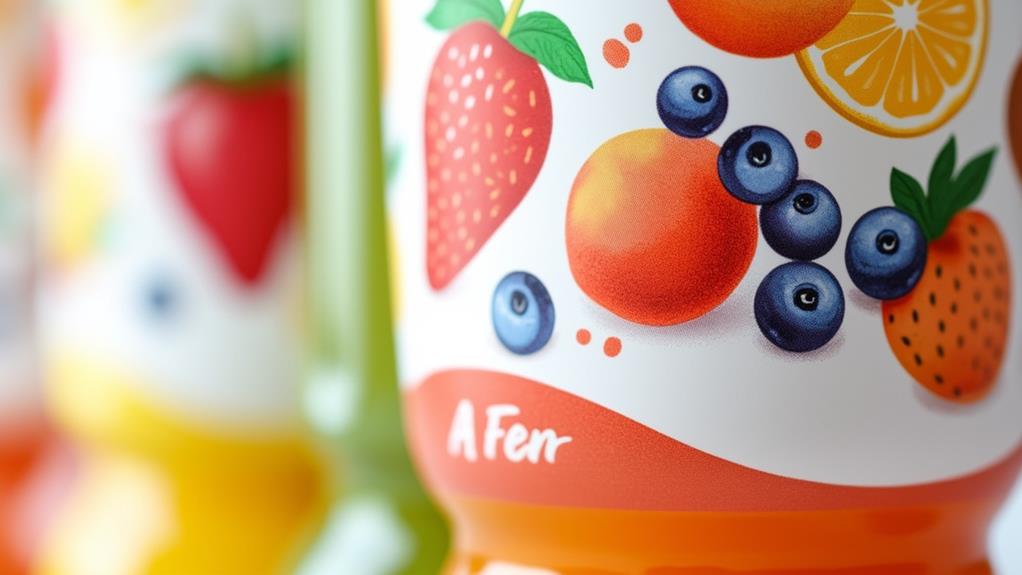
When you're scrutinizing juice labels, artificial additives can often sneak in under the guise of complex numbers or unfamiliar names. These additives might hint at processed ingredients rather than natural sources, posing potential health issues like hyperactivity or respiratory problems. As you read labels, watch out for terms like "natural flavors." They may not be as wholesome as they seem and could still contain artificial components.
Here's what to keep an eye out for:
- BHA and BHT: Preservatives linked to health concerns.
- Sodium Benzoate: Can be associated with hyperactivity.
- Artificial Colorings: Red 40 and Yellow 5 suggest artificial improvement.
- Long Ingredient Lists: Often indicate more artificial additives.
- Unrecognizable Components: Be wary of ingredients you can't pronounce.
For a healthier choice, prioritize juices with short ingredient lists filled with recognizable components. These juices are more likely derived from real fruits rather than artificial improvements. Remember, the simpler and more straightforward the ingredient list, the better it is for your health. By staying vigilant, you can avoid unnecessary artificial additives and make more informed decisions about what you consume.
Decoding Health Claims
Understanding juice labels can be tricky, but getting familiar with common health claims is essential to making better choices. When reading juice labels, a guide to reading these claims can help you navigate the aisles with confidence. For starters, "100% juice" and "no added sugars" indicate that you're getting pure fruit juices without extra sweeteners or fillers. It's vital to check these claims to guarantee you're choosing the healthiest options among foods and beverages.
The term "organic" on the label assures you that the juice meets USDA standards, which means no synthetic pesticides or fertilizers were used. This can be a significant consideration if you're conscious about the quality and source of your juice. Health claims like "high in vitamin C" mean the juice provides at least 20% of the percent daily value of the nutrient per serving, offering a good nutritional enhancement.
For those watching their sodium intake, look for "low sodium" labels, which indicate the product contains 140 mg or less per serving. Always verify the percentage of real juice content, as some products might mainly consist of water or additives despite their health claims.

